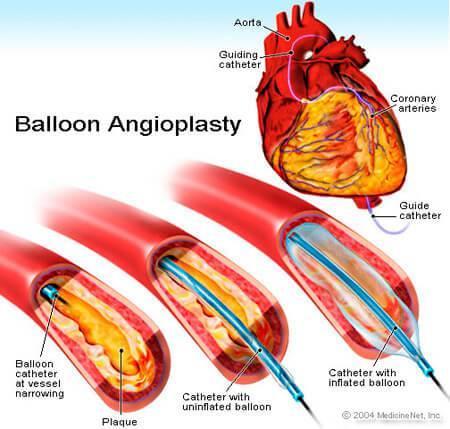What is Angioplasty?
Angioplasty is actually a Greek word which means vessel shaping. This procedure is especially performed to widen the clogged arteries which are generally coronary artery. This clogging of arteries can be blocked or narrowed mostly due to peripheral arterial disorder, while there is some other cardiac disorders also which needs surgery.

Why is Angioplasty performed?
There is just few purpose of performing angioplasty surgery. The main purpose is to widening the clogged arteries to improve proper blood circulation in the heart, and to avoid the problems like shortage of oxygen. This surgery also decreases the chance of heart attack.
Who performs Angioplasty?
This surgery is consider as a major surgery which is performed by the cardiology specialists who have experienced and extensive training is both invasive cardiology and general cardiology which has involved procedures like angioplasties and angiograms.
Where does Angioplasty take place?
The procedure of angioplasty is performed by expert surgeon at hospital in cardiology department in cardiac Catheterization Lab. The lab is a special room which is equipped with specific medical facilities which avoids transfer of special cardiac cases from one medical facility to other which has advanced imaging technology.
How long does Angioplasty take?
This procedure is not very time consuming. It takes 1 hour of time, but the patients undergo angioplasty needs addition 12-16 hours to get recover. The individual needs to have a stay at hospital for a night and can leave for the home the following day.
Types of Angioplasty:
The angioplasty surgery is divided into 4 types are completely based on the type of instrument:
- Balloon Angioplasty: This angioplasty surgery comprises the way of a catheter or thin tube, within a specific artery via a cut in the upper arm or leg. Then the catheter will be directed inside the clogged artery.
- Laser Angioplasty: The procedure of laser angioplasty and balloon angioplasty are quite similar, the only difference is that in laser angioplasty, it has the laser on its tip instead of balloon. The tip consists of the laser can directly focused on the clogged artery and gradually eliminates the plaque and that too as per the layer.
- Atherectomy: In this there a special instrument is used instead of a balloon is inserted against the wall of arteries which has deposits of fat. It cuts away the plaque. This Surgery is performed on more hardened artery blockages. This procedure is further divided into different types includes Extraction atherectomy, Rotational atherectomy and Directional atherectomy.
- Coronary stenting: This procedure is done in order to avoid the problem of closing of artery again, this condition is called restenosis.
What are the possible risks of Angioplasty?
There are no such serious complication are reported by angioplasty surgery. However, there are some complications might been seen based on individual patients:
- Damage of blood vessel due to careless insertion of catheter
- Feeling of discomfort at the site of insertion of catheter, sometime bleeding too
- The dye utilized during procedure can be a cause for kidney damage
- The patient might face the problem of arrhythmia which means irregularity of heartbeat
- Patient up to 3-5% can face the issue of heart attack and less than 1% can face the issue of strokes
- Cases of death during angioplasty are very rare
- A mild chest pain can also be experienced
- Risk can be higher in elder people age above 65 years and mostly among individuals having disorders like heart diseases, or chronic kidney disease.
Cost of Angioplasty
The type of stent utilized majorly influence the cost of angioplasty surgery. The stent cost covers around 50% of the total surgery cost. The price of the stent varies very much. Other charges that includes in the total cost of angioplasty are cost of equipment, medicine fees, charges of doctors and etc. This is why the total cost of angioplasty surgery varies.
You can also read
Congestive Heart Failure – Causes, Symptoms and treatment
How to Recover From Heart Surgery?

